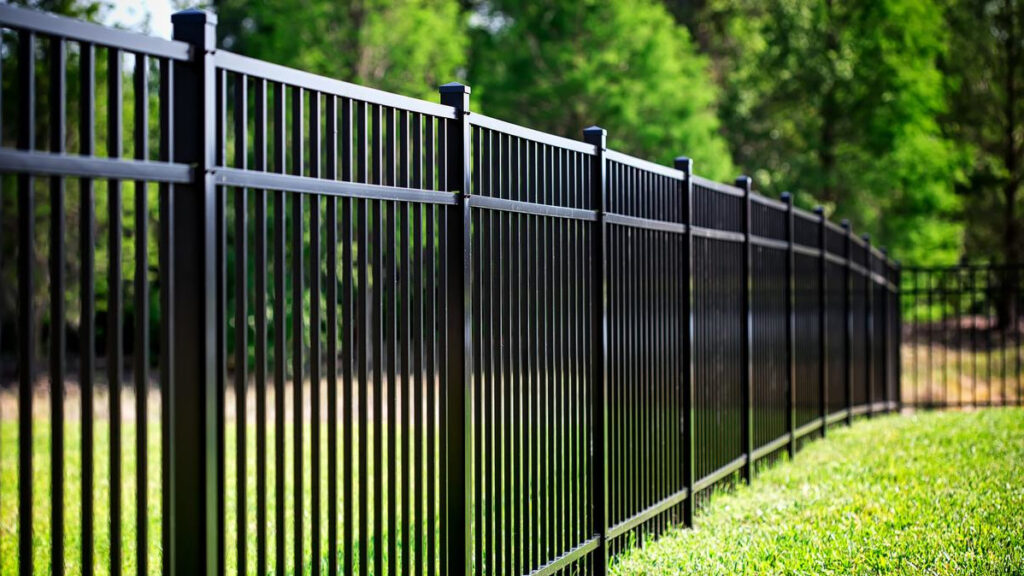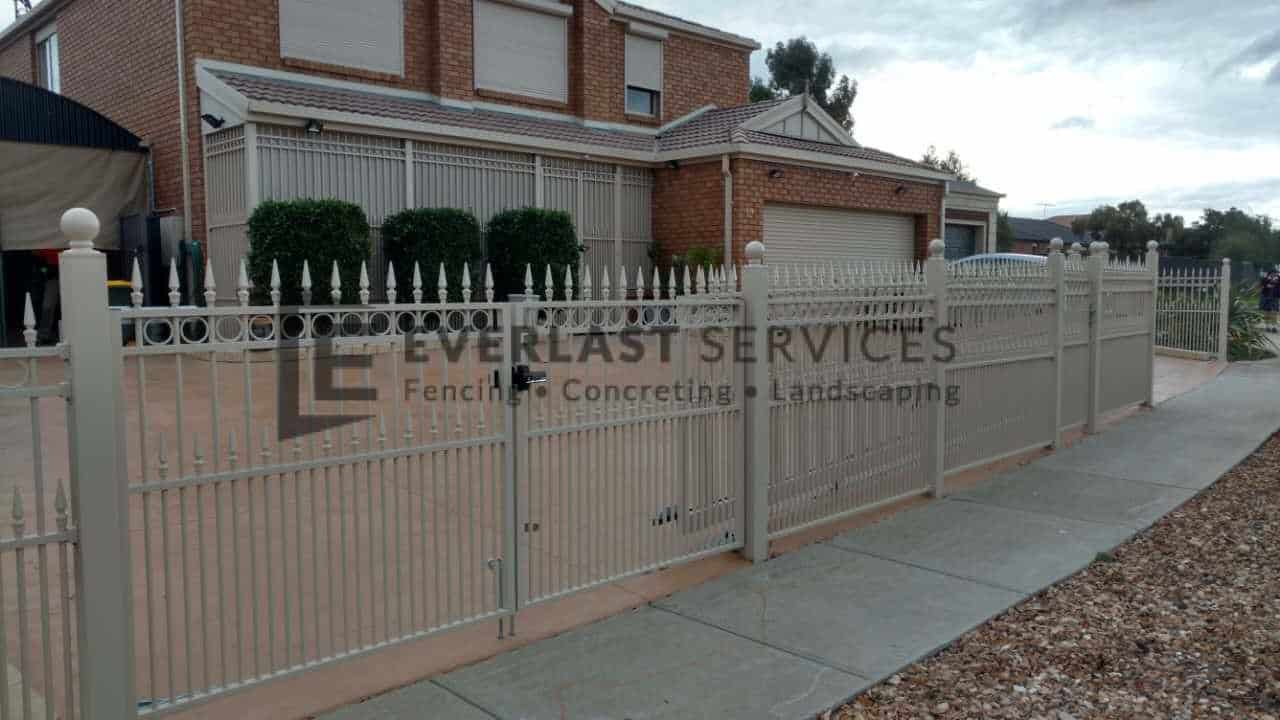5 Things You Didn’t Know Fencing in Auckland Could Do for Your Property
5 Things You Didn’t Know Fencing in Auckland Could Do for Your Property
Blog Article
A Comprehensive Overview to Fencing Install: What You Need to Learn About Secure Fencing Services
When it comes to setting up a fencing, you have actually obtained a lot to consider. From choosing the best products to comprehending local laws, each step can feel frustrating. You'll require to assess your property and determine if you wish to tackle the installation yourself or work with a professional. But that's simply the beginning. Let's check out the important factors that can make or break your fence task.
Comprehending Different Sorts Of Secure Fencing Materials
When you're choosing a fencing, understanding the different kinds of fencing products is important. Each material offers special advantages and disadvantages, impacting your choice. Timber supplies a timeless look and can be customized, but it requires normal maintenance and may rot over time. Plastic is low-maintenance and long lasting, resisting fading and bugs, yet it can be pricier upfront. Chain-link fence is cost-effective and sensible for enclosing huge areas, though it lacks personal privacy and aesthetic appeal. Metal fence, like wrought iron or light weight aluminum, offers toughness and beauty however might need corrosion security. Compound materials mix the most effective of timber and plastic, providing resilience with an all-natural appearance. Consider your spending plan, wanted visual appeals, and upkeep preferences when examining these options. Inevitably, choosing the ideal product will assist you develop a fencing that meets your requirements and improves your home's value.
Assessing Your Building and Fence Demands
Before you begin your fence setup, it's vital to assess your building boundaries and the objective of your fencing. Recognizing local laws and licenses will certainly also aid you prevent any kind of legal problems down the line. By considering these aspects, you'll ensure your fencing meets both your demands and community requirements.
Property Boundaries and Lines
Recognizing your home borders is important for an effective fencing setup, as it not only aids you identify where your fencing will go but also assures you're valuing your neighbors' room. Begin by examining your property action or study, which generally outlines the exact borders. You might likewise desire to seek advice from a professional property surveyor if you're not sure.
Remember, local zoning laws might determine fencing placement and height, so check those regulations also. Taking these actions assurances your fence is appropriately placed and compliant, making the whole procedure smoother for you.
Purpose of Fence
Third, fencing can define your property limits, making it clear where your area ends and your neighbor's begins. A well-placed fencing can help manage noise from nearby roads or next-door neighbors and also keep pet dogs and kids safe. By assessing your certain needs, you can choose the appropriate type of fence to achieve these advantages properly.

Local Rules and Permits
How can you assure your fence installment follows local regulations? Beginning by talking to your local zoning office or community website. Fence Builders. They usually have standards about fencing height, products, and positioning. You'll likewise desire to discover out if you require a license before starting your task. Some areas need authorizations for any brand-new fence, while others might only need them for taller structures.
Additionally, think about residential or commercial property lines and any kind of easements on your land. Noting your boundaries can stop disagreements with neighbors or prospective lawful issues. By comprehending these laws upfront, you can avoid expensive errors and identify your fencing is constructed to last, boosting both your residential or commercial property's value and your comfort.
Local Regulations and Permits for Fencing
Prior to you start your fence task, it is necessary to check neighborhood policies and get any essential licenses. Each city or county has its very own regulations concerning fence height, products, and placement. These policies ensure that your fence follows safety requirements and community aesthetic appeals.
You could need to submit a fencing plan, describing measurements and materials. Some areas might even call for a study to confirm property borders.
Ignoring to follow these laws can bring about fines or compelled elimination of your fencing, squandering both time and money. Take the time to research and protect the proper authorizations for a smooth setup procedure. This step is essential in seeing to it your project straightens with regional laws and neighborhood criteria.
Selecting In Between DIY Installment and Professional Solutions
Are you considering whether to take on the fence setup yourself or hire a specialist? This choice depends upon a number of elements. First, examine your ability level. If you come in handy and have experience with similar why not check here tasks, DIY could save you money. Be truthful concerning your abilities; mistakes can lead to extra expenses and headaches.
Following, consider the moment commitment. Installing a fence requires time, and if you're handling a busy schedule, employing a professional can guarantee it gets done successfully. Additionally, consider the complexity of the project. If your yard has difficult surface or certain style demands, experts bring proficiency that can make a difference.
Last but not least, element in local regulations. An expert understands the permits and codes required, assisting you avoid possible penalties. Ultimately, evaluate your abilities, time, complexity, and guidelines to make the finest choice for your fence task.
Step-by-Step Guide to Fencing Installment
When you've chosen to move on with your fence installment, complying with an organized step-by-step method will certainly assure a smooth process. Start by noting the fence line with stakes and string to imagine the layout. Next, check local guidelines to validate compliance with elevation and home lines.
Dig post openings a minimum of two feet deep, spaced according to your fence type-- typically 6 to 8 feet apart. Place the articles into the openings and load them with concrete for stability. As soon as the posts are established, connect the straight rails or panels, ensuring they're degree.
Protect the panels or pickets, confirming they line up appropriately. If you're using gateways, install them last, ensuring they swing openly. Check for any type of loosened links and make required modifications. Your fence should currently be all set to enhance your building and offer the personal privacy or security you require!
Upkeep Tips for Long Life of Your Fencing
To maintain your fence looking great and long lasting longer, regular upkeep is crucial. You need to establish a cleansing schedule, inspect for any type of damages, and use safety finishes as required. By remaining aggressive with these tasks, you'll ensure your fence stays durable and appealing for many years to find.
Regular Cleansing Set Up
While it could be very easy to forget, developing a normal cleansing routine is important for maintaining the longevity of your fencing. Beginning by washing your fence with water a minimum of as soon as every period to eliminate dirt and debris. For wood fencings, use a gentle soap remedy and a soft brush to scrub away any type of mold or mildew. Do not fail to remember to look for any corrosion on metal fences; a cord brush can aid eliminate it, adhered to by a coat of rust-resistant paint. If you live in a location with heavy pollen or dirt, you may intend to boost your cleaning regularity. Maintaining your fence tidy not just enhances its appearance but also expands its life, conserving you money in the lengthy run.
Check for Damage
Routinely evaluating your fence for damages is vital if Resources you intend to preserve its honesty and durability. Start by walking around your fencing to search for noticeable indications of wear, such as splits, loose boards, or rust. Pay unique focus to the base and messages, where dampness can cause considerable concerns. If you notice any type of damages, remember and determine the necessity of repair work. Resolving small issues immediately can stop them from escalating into bigger, extra costly problems. Inspect for any kind of indicators of insects, like termites or woodpeckers, that might jeopardize your fencing's structure. Confirm that your fencing continues to be secure by examining for any leaning or sagging sections. Regular inspections will certainly maintain your fencing looking great and functioning correctly for many years to find.
Apply Protective Coatings
After checking your fence for damage, applying safety coatings is a vital action in ensuring its long life - Fencing in Auckland. If your fencing is vinyl or steel, think about a UV-protective spray or paint to avoid fading and corrosion.
See to it to cleanse the surface completely before application, as dust and gunk can undermine the finish's efficiency. Use the finishing in dry climate for much better attachment, and don't neglect to follow the manufacturer's guidelines for the very best outcomes. Routinely reapply every couple of years to maintain your fence looking wonderful and standing strong versus the elements.
Expense Factors To Consider and Budgeting for Your Fence Job
When intending your fence job, recognizing expense factors to consider is necessary to staying within spending plan. Start by figuring out the sort of material you want, as prices can differ significantly between timber, plastic, and steel. Don't fail to remember to consider labor costs-- hiring experts could conserve you time however can raise your overall expenses.
Next, measure your residential or commercial property to calculate the linear footage needed, as this straight influences product expenses. Furthermore, think about any permits you could require, which can contribute to your budget plan.

Last but not least, it's a great concept to reserve a backup fund for view it unforeseen expenses. By preparing carefully and thinking about these factors, you can produce a practical budget that fulfills your fence requires without damaging the bank.
Often Asked Concerns
How much time Does the Ordinary Fence Installation Take?
The average fence installment generally takes one to three days, depending on the fence type and size of your yard. You'll need to take into consideration any delays as a result of weather or permit requirements also.
What Should I Do if My Fence Is Damaged?
If your fence is damaged, initially analyze the level of the damages. Repair small issues on your own, but for major problems, consider contacting a specialist. Don't wait too long; it'll help protect against even more complications.
Can I Mount a Fencing on an Incline?
Yes, you can mount a fence on a slope. You'll require to change your installment method, either by stepping the panels down or making use of a racked style to guarantee security and correct placement with the terrain.
What Are the Finest Practices for Fence Painting?
To repaint your fence successfully, begin with appropriate cleansing and sanding. Usage high-grade paint and apply in even strokes. Don't forget to pick the appropriate weather condition for painting, ensuring it's dry and mild.
Just how Frequently Should I Examine My Fencing?
You should examine your fence at the very least two times a year, focusing on signs of damages, rot, or rust. Normal checks aid you catch problems early, guaranteeing your fencing remains strong and aesthetically attractive much longer.
Report this page